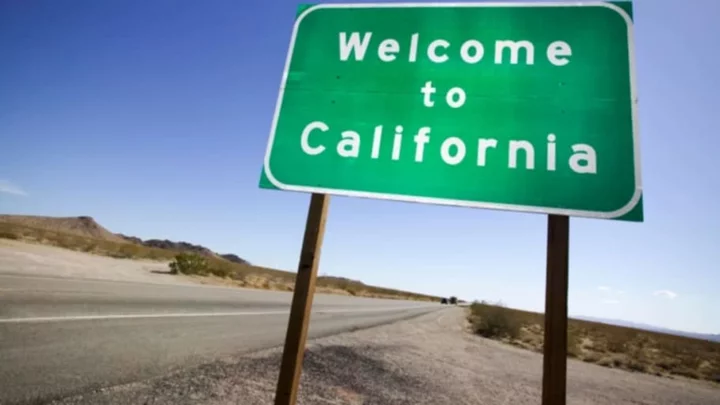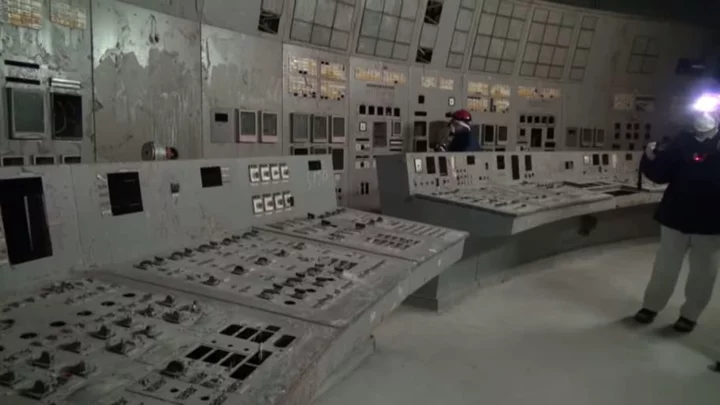If you want to learn about a place, you can always pick up a textbook. But if you want to get to know a place, you're going to have to dig a little deeper. And what you find there might be a little strange. The Strange States series will take you on a virtual tour of America to uncover the unusual people, places, things, and events that make this country such a unique place to call home.
In this entry, we head out west to what is undoubtedly one of the strangest states in the Union—California. With the Hollywood flair of Los Angeles, the counter-culture allure of San Francisco, and the free spirit of everywhere in between and beyond, California is filled with dozens of odd places, festivals, and attractions—too many to count, really. So instead, we’ll take a look at a few people who have helped make California the unofficial home of eccentricity.
Emperor Norton I Reigns Over the Bay
According to the history books, there were five U.S. Presidents between 1859 and 1880. But to the people of San Francisco, there was only one man truly in charge—his Imperial Majesty, Joshua Norton I, the United States’ only emperor.
Born in about 1819, Norton came to San Francisco from South Africa at the age of 30 after inheriting $40,000 (~$1.1 million today) from his father's estate. With a number of risky but lucrative investments, his fortune grew to nearly $250,000, but a failed attempt to corner the imported rice market left Norton bankrupt. After he unsuccessfully sued to have his rice contract voided, Norton disappeared for a few years, only to resurface in 1859 in grand fashion—by sending a decree to San Francisco newspapers declaring himself the “Emperor of the United States and Protector of Mexico.”
Over the next 20 years, the self-appointed emperor submitted numerous lofty rulings, including one that declared Congress should meet in San Francisco instead of Washington D.C., another that banned the Republican and Democratic parties, and even one dissolving the United States itself. In addition, he made more modest proclamations, like telling the capital city of Sacramento to clean its streets and add more gaslights, or that the Grand Hotel should give him room and board or else face banishment. Oddly enough, one of his decrees wound up being ahead of its time: Norton called for the construction of a suspension bridge between San Francisco and Oakland, which eventually came to fruition as the Bay Bridge in 1936.
Although the newspapers printed his declarations as entertainment, the people of San Francisco took a liking to the eccentric emperor thanks to his public persona. Every day, Norton wore a blue military uniform—complete with brass buttons, gold epaulettes, a cap, and a saber at his side—that he somehow procured from the soldiers at the Presidio of San Francisco. In later years, he sported a stovepipe hat garnished with a peacock feather and rosette. As part of his self-imposed daily duties, Norton inspected cable cars and public works projects, and stopped police officers to ensure their uniforms were clean. He even handed out his own currency issued by the Imperial Government of Norton I that was gladly accepted at most businesses in town.
Norton was welcomed at all the finest restaurants in the Bay Area, despite not having any non-Imperial currency to pay for the meals. Playhouses reserved balcony seats for him in the hopes he might attend a performance. He was often asked to speak at conferences and give lectures, and was a welcome debater among intellectuals. His room was said to have been paid for by various beneficiaries, including the local Masonic Lodge, of which he was a member. If he regularly frequented a place of business, the shop owners had brass plaques made and put on display, touting that they had received the Imperial seal of approval. And when he was once taken into custody for involuntary mental care by a naive police officer, Norton was released the next morning at the command of the Chief of Police, with an official apology from the department, and $4.75 (~$75 today) for his troubles. Norton was kind enough to grant a formal pardon to the Chief and the officer for the misunderstanding. From then on, officers often saluted when they passed him on the street.
The Emperor died on January 8, 1880, after collapsing on a street corner while on his way to lecture at the Academy of Natural Sciences. Depending upon the version of the legend you hear, his funeral was attended by anywhere from 10,000 to 30,000 people from all walks of life, there to witness the end of his 21-year reign. While his sanity can be debated, there’s no question that Norton I had an impact on the people of San Francisco.
William “Burro” Schmidt and His Tunnel
Like many before him, William “Burro” Schmidt sought his fortune in the El Paso Mountains of Kern County, California. Schmidt staked his claim in the early 20th century on a 4400 foot peak, and soon found small deposits of ore that contained gold. But the closest smelter to extract the gold was in Mojave, California, which required Schmidt and his donkeys to traverse a dangerous trail to get to the other side of the mountain. After a few perilous trips, Schmidt decided the risk just wasn’t worth it. But rather than abandon his claim, in 1906, he started digging a 6 foot high, 10 foot wide tunnel through the solid granite mountain so he could bypass the trail entirely.
For many years Schmidt used nothing but a pick, a shovel, and a four pound hammer, carrying loosened rocks out as needed. As he got further into the mountain, he installed a railcar to help haul out debris, and resorted to notoriously short-fused sticks of dynamite to move things along a little faster.
He continued to work on the tunnel even after a road built in 1920 would have made the trip to Mojave safer and faster than going down the other side of the mountain. He admitted that the road made little difference to him at that point, as he had simply become obsessed with seeing the project through to completion. He finally did break through to the other side of the mountain in 1938, having moved an estimated 5800 tons of granite to complete his 2500 foot long tunnel. Oddly enough, Schmidt never even used the tunnel to haul his ore to Mojave.
There’s a commonly told legend that Schmidt wasn’t really digging the tunnel out of compulsion, but that he was actually following a rich vein of gold that snaked through the mountain. If that’s true, no one has ever been able to find any proof that Schmidt wound up a wealthy man. In fact, experts say there are still veins of gold left untouched, seeming to prove that Schmidt had lost interest in mining over the years.
Schmidt’s cabin and other buildings still stand virtually untouched since the 1930s. In the past, tours were available at the site, but legal wranglings over ownership of the property have required the buildings be fenced off and closed to visitors. The tunnel is still open for self-guided tours, though. If you plan to visit, be sure to bring plenty of water, some solid shoes, and a flashlight with fresh batteries.
Have the scoop on an unusual person, place or event in your state? Tell me about it on Twitter (@spacemonkeyx) and maybe I’ll include it in a future edition of Strange States!
This article was originally published on www.mentalfloss.com as California!.









